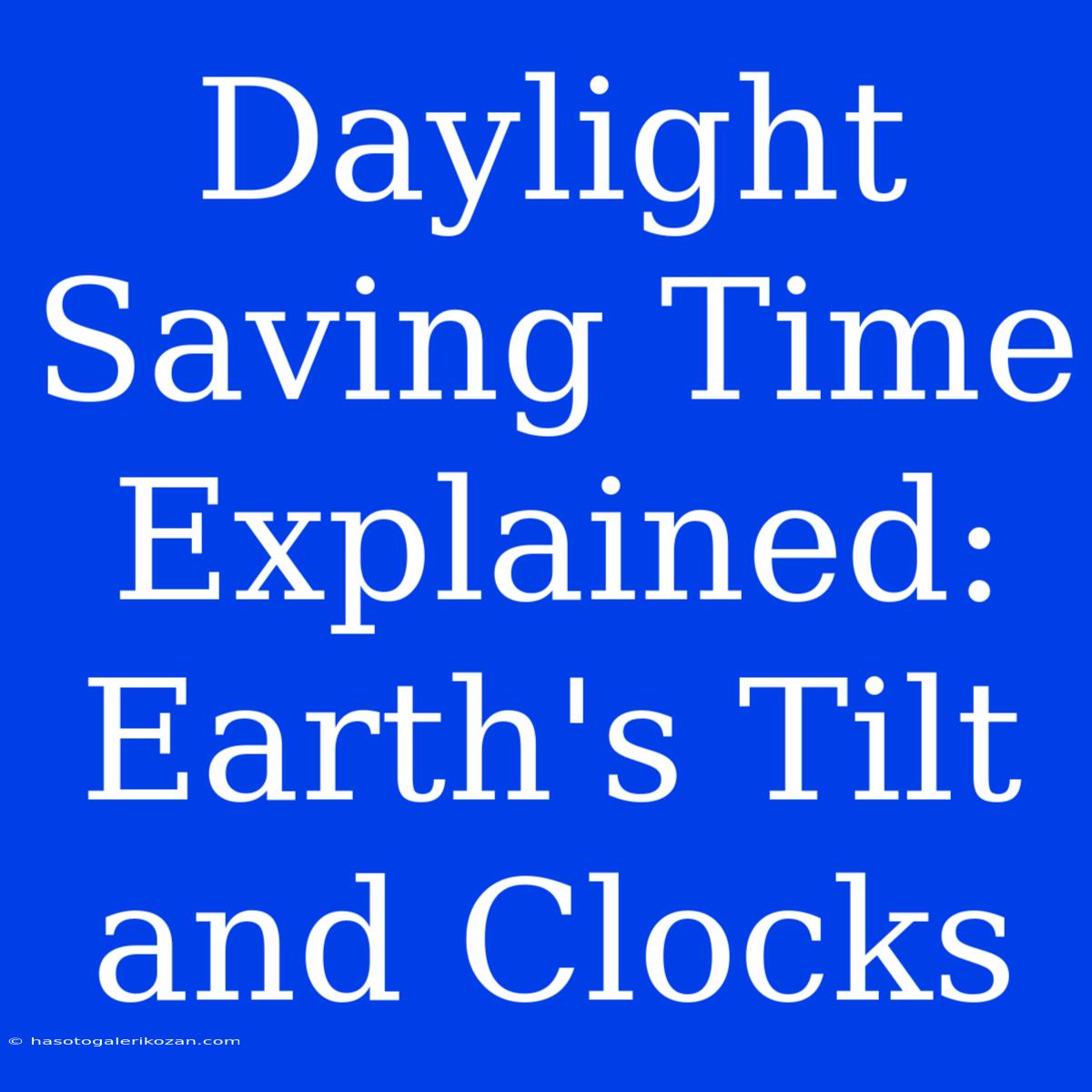Daylight Saving Time Explained: Earth's Tilt and Clocks
Daylight Saving Time (DST), also known as summer time, is a seasonal adjustment of clocks that moves them forward by an hour during the warmer months. This practice is common in many parts of the world, but it has also sparked debate over its efficacy and impact on our lives.
Understanding Earth's Tilt and the Seasons
To understand DST, we need to first grasp the fundamental reason behind seasons: Earth's tilt. Our planet is tilted on its axis at approximately 23.5 degrees. This tilt causes different parts of the Earth to receive varying amounts of sunlight throughout the year, leading to the changing seasons.
Why Do We Need Daylight Saving Time?
During the summer months, the Northern Hemisphere is tilted towards the sun, resulting in longer days and shorter nights. This abundance of daylight, however, can lead to wasted daylight hours in the morning.
The Goal of DST:
Daylight Saving Time was introduced to make better use of daylight hours. By moving the clocks forward by an hour, we shift the daylight period from early mornings to later evenings. This allows people to enjoy more daylight during the peak hours of activity, reducing energy consumption and boosting economic productivity.
How Does DST Affect Our Clocks?
When DST is in effect, clocks are moved forward one hour. For example, when DST begins in March, we "spring forward" by setting our clocks one hour ahead. This means that sunrise and sunset occur later in the day, extending daylight hours for evening activities.
The Reverse: Falling Back
In the fall, we "fall back" by setting our clocks one hour back to standard time. This brings the clock back to its normal position, aligning with the natural progression of daylight and darkness.
Arguments For and Against DST
While Daylight Saving Time has its proponents, it also faces criticism.
Arguments for DST:
- Energy Savings: By extending daylight hours, people can enjoy more natural light, potentially reducing reliance on artificial lighting and energy consumption.
- Increased Economic Activity: Longer evening daylight can boost outdoor recreation, shopping, and other activities, promoting economic activity.
- Improved Safety: More daylight hours in the evenings may reduce accidents and crime rates.
Arguments Against DST:
- Health Concerns: Shifting sleep patterns can disrupt the body's natural circadian rhythm, leading to sleep deprivation, mood swings, and health problems.
- Disruption to Schedules: The clock changes can disrupt daily routines, especially for those with fixed schedules, such as shift workers.
- Confusion and Errors: The annual clock changes can lead to confusion and errors in scheduling, appointments, and travel.
Conclusion
Daylight Saving Time is a complex issue with a history spanning over a century. It continues to be debated and revised, with countries adopting, rejecting, or modifying its practice based on their unique circumstances and priorities. Ultimately, the effectiveness of DST depends on the specific needs and goals of a given society.
